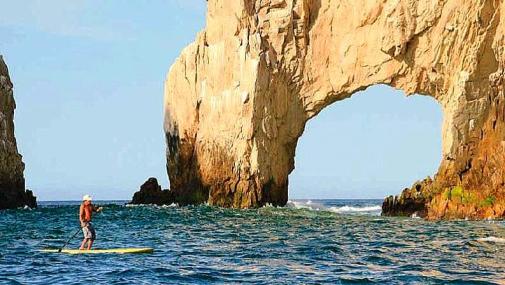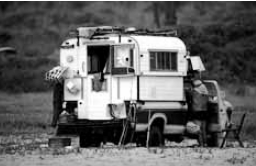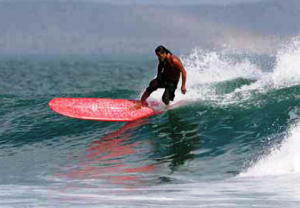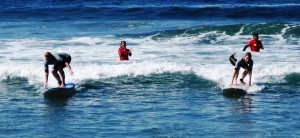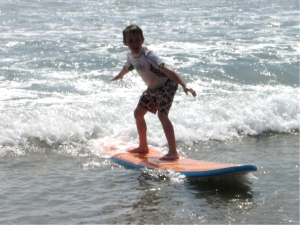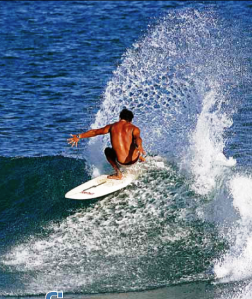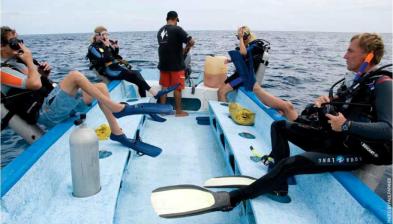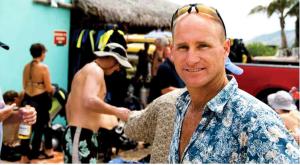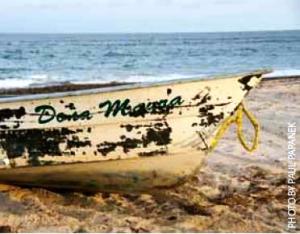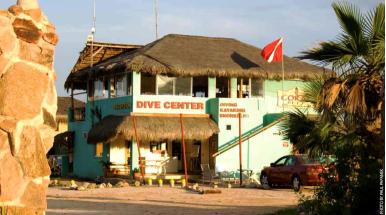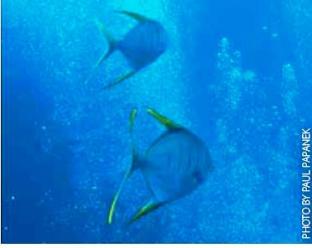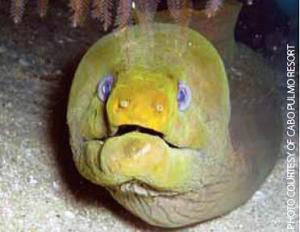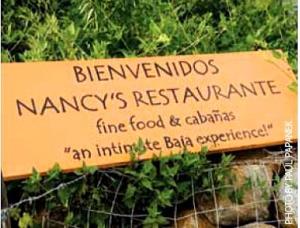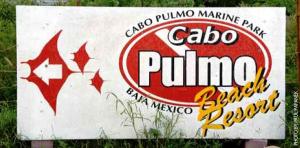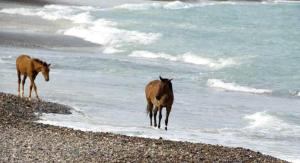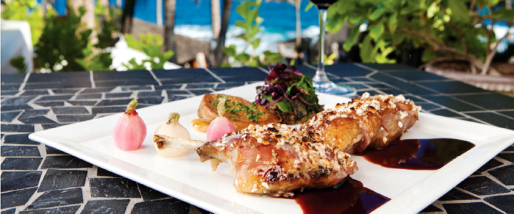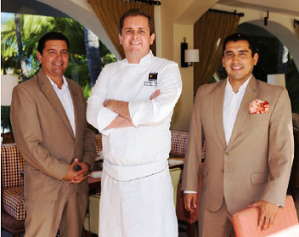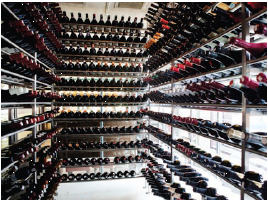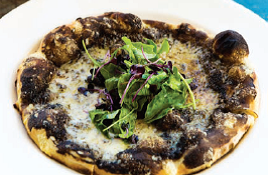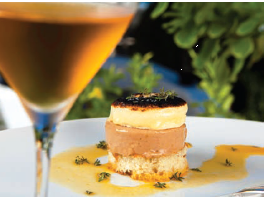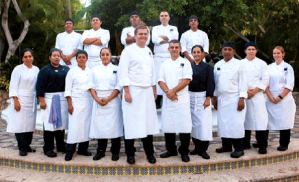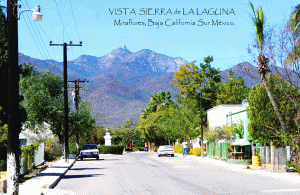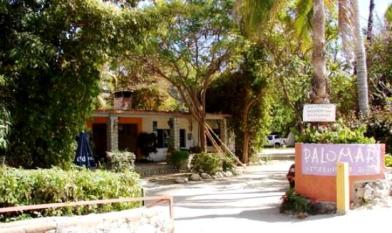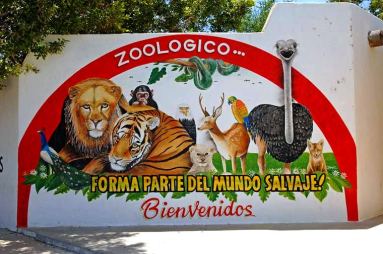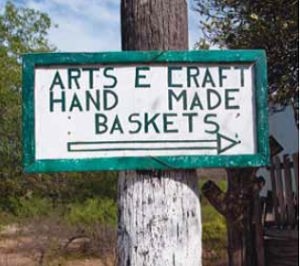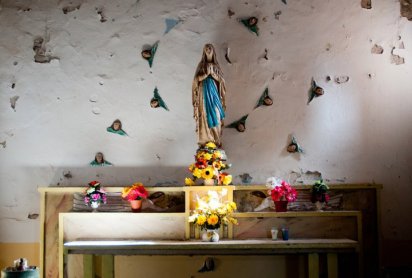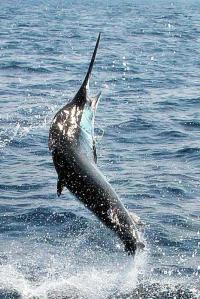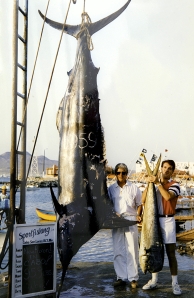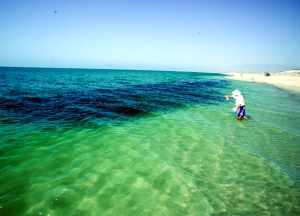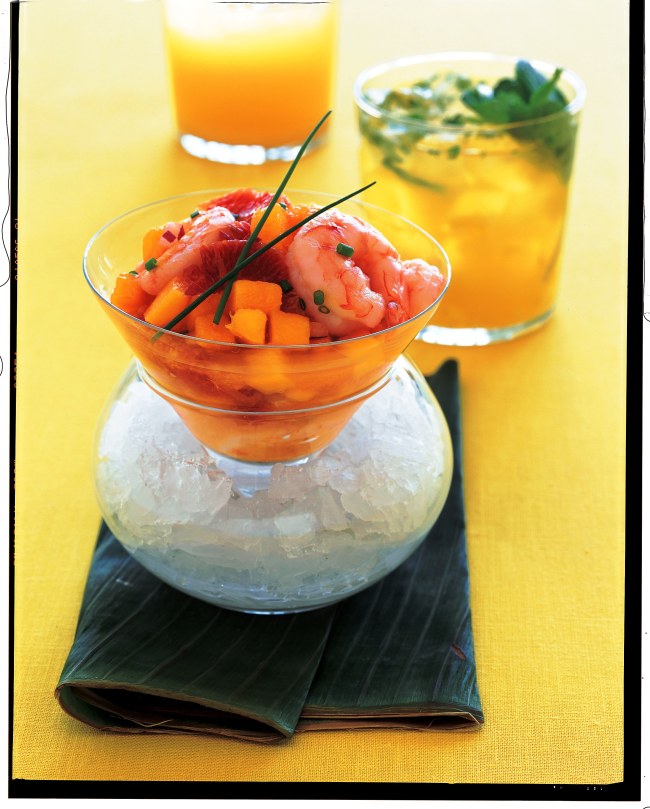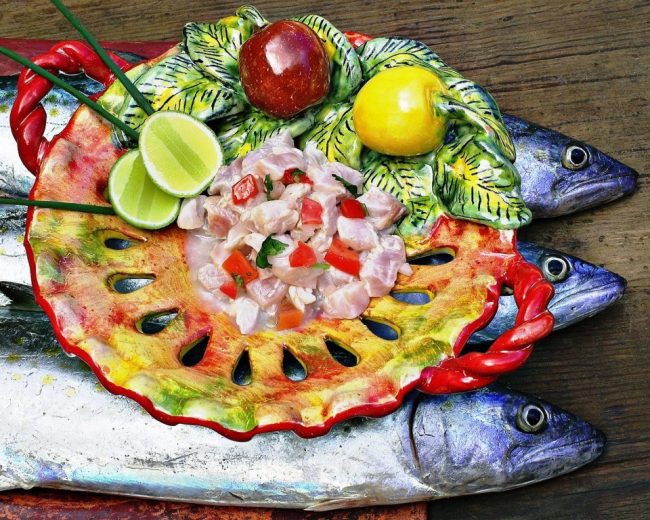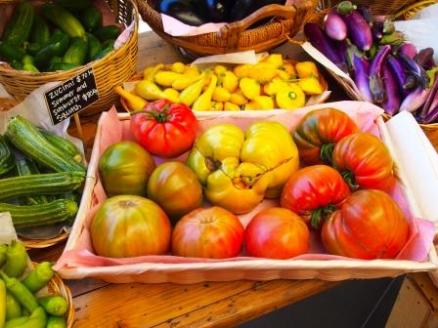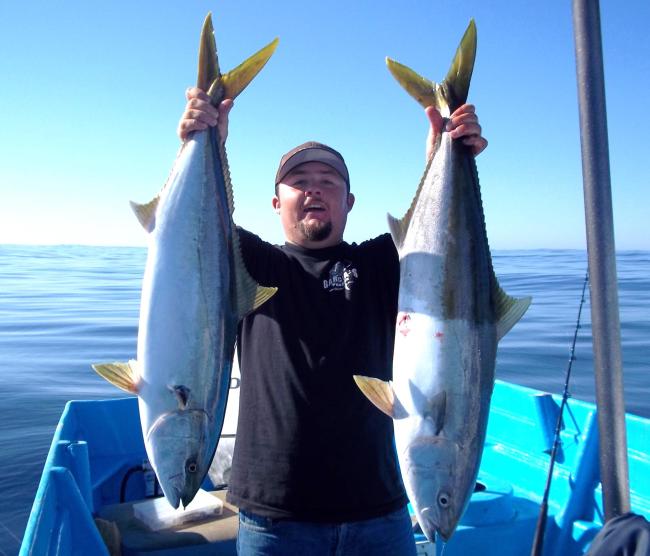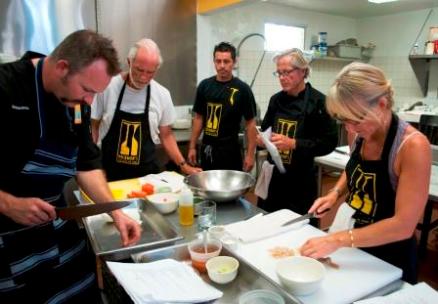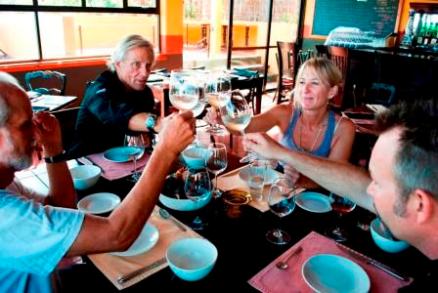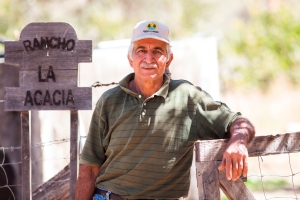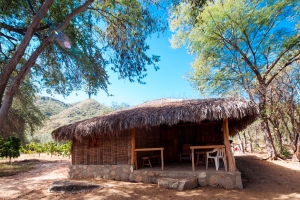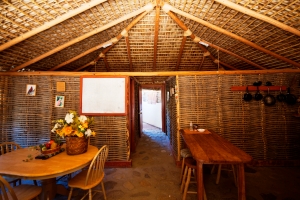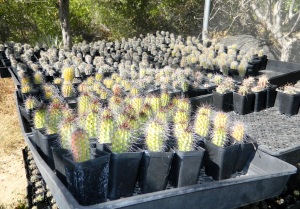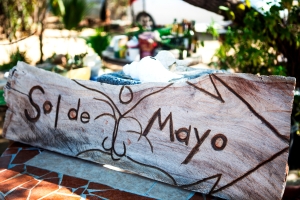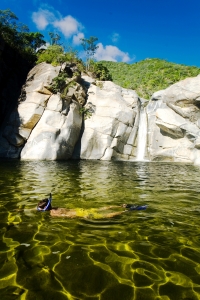On Captain James Cook’s third expedition to the Pacific, his ships HMS Discovery and Resolution, made the first recorded European visit to Hawaii in 1778, when they stopped at the western end of the island chain on their way from Tahiti to the northwest coast of North America, stopping at the Big Island of Hawaii. There, at Kealakekua Bay, Cook was killed by Hawaiians when he made a misguided attempt to kidnap their high chief to force the return of a stolen boat.
That’s the bad news. The good news is that Lieutenant James King, First Lieutenant of the Discovery was given the task of completing the narrative portion of Cook’s journals after Cook’s death in 1779 and devoted two full pages to a description of surfboard riding, as practiced by the locals. His journal entry is the earliest written account of surfing as a cultural practice:
“Where there is a very great Sea, and surf breaking on the Shore, the Men sometimes lay themselves flat upon an oval piece of plan about their Size and breadth, they keep their legs close on top of it, & their Arms are us’d to guide the plank, thye wait the time of the greatest Swell that sets on Shore, & altogether push forward with their Arms to keep on its top, it sends them in with a most astonishing Velocity, & the great art is to guide the plan so as always to keep it in a proper direction on the top of the Swell, & as it alters its direct. If the Swell drives him close to the rocks before he is overtaken by its break, he is much prais’d. By such like exercises, these men may be said to be almost amphibious. The diversion I conceive to be very pleasant, at least they seem to feel a great pleasure in the motion which this Exercise gives.”
In the late 1700s, riding waves lying down or standing on long, wooden surfboards was an integral part of Pacific Island lifestyle, as much a part of the local culture as professional sports are to contemporary life in the United States. While the Pacific Islanders had a big head start in enjoying the pleasures of wave riding, the tremendous influx of GIs into the area during World War II brought the sport to the attention of American sporting enthusiasts. Even as Americans were fighting in the Pacific, mainland surf culture began with people like Bob “The Phantom” Simmons, a Caltech dropout who pioneered modern surfboard design in Southern California, taking it from a heavy, rigid plank to something lighter, portable and more maneuverable. Employing balsa wood and then newer materials like fiberglass with a “form follows function” philosophy, Simmons created wave-riding vehicles based on hydrodynamics using graceful elongated shapes, fins and curves. Almost overnight, surfing boards went from 2-man carries to something easily carried by a single person and placed on top of a car.
“You paddle out turn around and raise
And baby that’s all there is to the coastline craze
You gotta catch a wave and you’re sittin’ on top of the world”
“Catch a Wave” – The Beach Boys
The early SoCal practitioners, before surfing caught the big tsunami of The Beach Boys’ harmony-driven anthems, and became a multi-billion dollar part of the culture, were surf-niks like Simmons and “Ironman” Mike Doyle who camped out in their cars, slept on beaches up and down the coast, frequently riding alone and without wet suits in cold winter months.
The coastal highway and the breaking waves were the muse in Los Angeles, Orange County and then San Diego and into Baja, always beckoning to surfers in search of the perfect wave. And there were plenty of them on the deserted shores stretching south of the border.
If everybody had an ocean, then they’d probably want it ringed with the dazzling white sand wave depositories that southern Baja is blessed with. From the legendary spots in Todos Santos to Playa Cerritos and all the way to San Jose and the East Cape, there are surfing spots in Los Cabos suited to any aptitude and style, and the sport continues to evolve.
The Cabo area was surfed as early as the fifties by traveling California boaters and fishermen, and later surfing enthusiast Steve Bigler flew into a dusty airstrip in San Jose Del Cabo in 1967 to film some footage for the ’68 surf film “Golden Breed.” Surfline’s Sean Collins, who passed away in 2011, began his lifelong exploration of the area in the late 60s and early 70s. But even though the Trans-Peninsular highway linking Baja Norte and Baja Sur was completed in 1973, the area didn’t really start getting popular until the mid-80s.
There are many great surf spots around the coastline of southern Baja where enthusiasts from beginners to experts can enjoy the action. Monuments, Zippers, Acapulquito, Costa Azul, La Roca, Old Man, Shipwreck, Playa El Tule in the Corridor, and Playa Cerritos up the road near Todos Santos are popular spots that offer consistently approachable breaks and classic wave action. Depending on time of year and water conditions, you can count on surfing conditions that range from fun and dependable to outrageous. With so many different opportunities in the area, southern Baja is a place where former world champions like Mike Doyle and ex-pat Pat Curren have decided to settle in and now teach others how to enjoy to action wherever it’s breaking.
The Fletcher Los Cabos Classic, held in 1991 and won by Kelly Slater, was the first big surf contest held here, and the surfing scene then was more like an extended beach party with a coincidental surf contest than anything else. Things began to get serious when the Surf Industry Manufacturers Association (SIMA) started an annual conference in Los Cabos in 1998 and the local surfing population – both Mexican and gringo – has continued to grow as new aspects of the sport like stand up paddleboarding are introduced. Recent news includes the announcement of the World SUP Championships to be held in Los Cabos in November 2012, a recognition of the world class status of the location and its many amenities.
Following is a guide by area to some of the top surfing spots in Los Cabos. By no means definitive, this is designed to help those who are looking to get started in the sport and become part of the growing numbers of the coastline craze.
On a slightly overcast beach near Todos Santos a small group of enthusiastic women have gathered to prove that they have what it takes to be surfers. This beach, on the Pacific side of Baja California Sur, is where you want to be when west swells bring consistent waves, and when the conditions are just right 12-footers can appear for days. But today these women are just learning surfing basics with their instructor Mario. Part of the Todos Santos Eco Adventures Surf Camp for Women, they participate in a full week of activities headquartered at Los Colibris that include not only lessons in wave theory, but also horseback riding, pre-surf yoga classes, Mexican cooking lessons, swimming with sea lions, tapas and wine tasting (sometimes followed by spontaneous dancing), massage therapy, visits to local art galleries, Hotel California and restaurants, and, yes, shopping. Consider this package your one-stop introduction to all the good things that the Todos Santos has to offer, with surf lessons each morning, a fun/indulgent activity each afternoon, and authentic dining experience each evening.
Near Todos Santos on Mexico Hwy 19 at approximately Km. 64 in Pescadero between Playa Los Cerritos and Playa San Pedrito with access to popular Playa Pescadero is the Pescadero Surf Camp, which is not limited to women and offers lodging and lessons for beginning, intermediate and advanced surfers. The camp offers packages of excursions all around southern Baja and a year round onsite guide is available for individuals or groups to get you to the best swells from the East Cape region to the Pacific. All surf gear is provided or you can bring your own. The lodging here is well-maintained and functional, with campsites consisting of palapas with electricity, lights and water, casitas with or without private showers and a camp house with two bedrooms, bathroom, shower, full kitchen, living room and private patio. A pool with swim-up palapa bar is often the social center for many of the more serious boarders in the area, but the camp is a perfect introduction for first-timers also.
Also situated in Todos Santos next to the Hotel Santa Rosa is La Sirena Eco Adventures which offers packages for local surfing, kayak and snorkeling, sea turtle activities, whale watching and guest house rentals, cozy one bedroom/one bath casitas nestled in palm trees within walking distance to markets, downtown Todos Santos and Playa La Poza for turtle hatchling releases. The comfortable and predictable waters of nearby Playa Los Cerritos make it the perfect place for beginner and intermediate surfers. La Sirena provides bilingual instructors with years of surfing and surf instruction experience and will design a package of custom lessons to suit a given skill level, including a three-day surf clinic which can be spread out over a week. La Sirena is a good base of operations for people who have more than one interest in the local ecology and they provide a lot of opportunities in preserving and sharing the natural resources of the area around Todos Santos.
One of the most popular areas in all of Los Cabos is the surf break just in front of the Cabo Surf Hotel. The hotel itself serves as host to a name brand surf school that comes with all the credentials of a world champion. “Ironman” Mike Doyle’s surf school is located onsite at the Cabo Surf Hotel and offers a full 3-day clinic (hotel guests have special discounts on surf clinics) for the beginners and advanced beginners to get into the action on the waves at Playa Acapulquito, one of the most reliable surfing spots in southern Baja, where a reef brake forms waves that break before reaching shore, making it also a popular surf spot and a safe place for swimmers. Watersport enthusiasts can also enjoy stand up paddling during the smaller wave months (mid-November to mid-March). All of their instructors are certified by NSSIA (National Surf Schools & Instructors Association) and head instructor Miguel Rojas is a Mexican National Champion on Short Board representing Baja California Sur, and has been a Mike Doyle School instructor for 9 years.
Another reputable surf shop in the immediate vicinity overlooking Zippers and other prime surf spots in San Jose del Cabo is Costa Azul Surf Shop. Owner Alejandro Olea started with a ding repair shack on Zippers beach in 1985. Since then, Costa Azul Surf Shop has become a thriving local business and headquarters for surf enthusiasts in southern Baja, where they provide updates on the latest surf conditions, custom surf wear and clothing and all the supplies you’ll need to enjoy your beach-going experience. “We’ve come a long way,” Olea says, “but I feel like we still have a long way to go before we’re where I want us to be. That’s why we started our Costa Azul Surf Shop Surf Lesson Program. We offer professional surf lessons from teachers who have a combined 120 years of surfing experience and who are CPR and First Aid certified.”
Costa Azul also has its own stock of about 250 signature-design surfboards boards, hand-shaped by a team of skilled shapers using recent technologies coupled with old world craftsmanship. The Costa Azul shop offers client transportation to the best local breaks, sponsors a junior waverider team and has a regular client list that includes the likes of Adam Sandler and NBA star Jason Kidd. Classes offered can include up to 10 people with four teachers per session, keeping the teacher-to-student ratio low. Private one-on-one lessons also are available by request. Beside its main headquarters near Zippers in San Jose, Costa Azul also has facilities in Playa Cerritos and Todos Santos to assist local enthusiasts there.
SurfinCabo, also in the San Jose area near Zippers, is a surfing Bed and Breakfast dedicated to guided surf tours for beginners up to expert level surfers. The hillside location offers 6 comfortable private rooms with all services you would want for a local visit, including a swimming pool, video arcade and spa. They also provide full surfing lessons, board rentals and repairs, and tours and excursions to wherever the best sets are breaking. They’re located 5 minutes from prime spots in the San Jose area, and are within an hours’ drive from the best Baja surfing spots from the East cape to the Pacific side when the northern swells are active.
Stand Up Paddleboarding
A close relative to the local surfing action is the up-and-coming new sport called SUP, for stand-up paddleboarding. Less dependent on surf conditions and easily approachable by the less athletic, SUP offers plenty of excitement and good exercise, as balancing and paddling provides cardio and strength training for a low impact, full body workout while enjoying the ocean environment in a zone where the surf meets the shore. Locally, there are several SUP operations that will get you into the action with a minimum of training.
SUP Mexico, with headquarters in San Jose del Cabo, is a full service location offering all there is to know about the world of stand-up paddling, including lessons with one of their WPA (World Paddle Association) instructors and a full range of SUP boards by Doyle and Hobie C4 Waterman, Paddle Surf Hawaii and Boardworks. SUP Mexico was started by Alfredo Salafranca and Kym Kuharski Salafranca, and opened for business in December 2010 in San Jose. They recently added another spot on Medano Beach near ME Cabo.
Alfredo’s love for surfing brought him to the world of paddle boarding, and after getting involved up the sport and noticing other locals and tourists also were enthusiastic realized the need for a SUP business in Los Cabos. Together over the years Alfredo and Kym have created a business that represents knowledge of the local waters and quality SUP products, and consistently promote their enthusiasm for the sport throughout the area. SUP Mexico is the official sponsor for two of the top ranked stand up paddle professionals in the world, Candice Appleby and Anthony Vela, and is also the founder of the Los Cabos Classic, a SUP Stand Up Paddle Race that is held in the fall each year at Palmilla Beach.
Cabo SUP is a stand up paddleboard club located in the heart of downtown Cabo that provides lessons, rentals, and guided tours. CABO SUP owners and operators Lee and Meredith Vosburgh started paddling 5 years ago in Montauk, Long Island. They continued paddling when they relocated to Cabo 3 years ago to be the onsite partners of the Bahia Hotel and Beach Club. The decision to share their passion for Stand Up Paddle was brought about by the ideal location of the Beach Club. The Beach Club is located on Medano Beach, one block from the Bahia Hotel, and the full service operation includes lessons and a full range of rental gear featuring SOS paddles boards and paddles (Lee promises you’ll be up and SUPing in only about an hour). Medano Beach is Cabo’s most swimmable stretch of sand where the famous Land’s End Arch marks the convergence of the Pacific Ocean and the Sea of Cortez, and, since many of the hotels on the Corridor don’t allow swimming due to rip currents and strong surf, many guests from that area take advantage of Medano Beach for all water activities. It also makes it a convenient place for first timers to earn their SUP wings.
No longer the sole domain of tousle-headed daredevils driving VW vans with handmade boards looking for deserted beaches and awesome swells, surfing in its many forms has evolved into big business in Baja and has made itself accessible to everyone. The waves that have been caressing the shores from Todos Santos to the East Cape are part of an endless cycle that has been going on for millions of years. A connection to that natural force, a power that can be exhilarating and even addictive, is something that surfers, when they drop into the face of a wave, feel intuitively. And now, thanks to the local entrepreneurs and water enthusiasts who love that feeling and want to share it, so can you.
For more information:
Todos Santos Eco Adventures: www.tosea.net
Pescadero Surf Camp: www.pescaderosurf.com
La Sirena Eco Adventures: www.lasirenakayaksurf.com
Cabo Surf Hotel: www.cabosurfhotel.com
Costa Azul Surf Shop: www.costa-azul.com.mx
SurfinCabo: www.surfincabo.com
SUP Mexico: http://mexicosup.com
Cabo SUP: http://cabosup.com
<script>
(function(i,s,o,g,r,a,m){i[‘GoogleAnalyticsObject’]=r;i[r]=i[r]||function(){
(i[r].q=i[r].q||[]).push(arguments)},i[r].l=1*new Date();a=s.createElement(o),
m=s.getElementsByTagName(o)[0];a.async=1;a.src=g;m.parentNode.insertBefore(a,m)
})(window,document,’script’,’//www.google-analytics.com/analytics.js’,’ga’);
ga(‘create’, ‘UA-45347916-1’, ‘auto’);
ga(‘send’, ‘pageview’);
</script>
